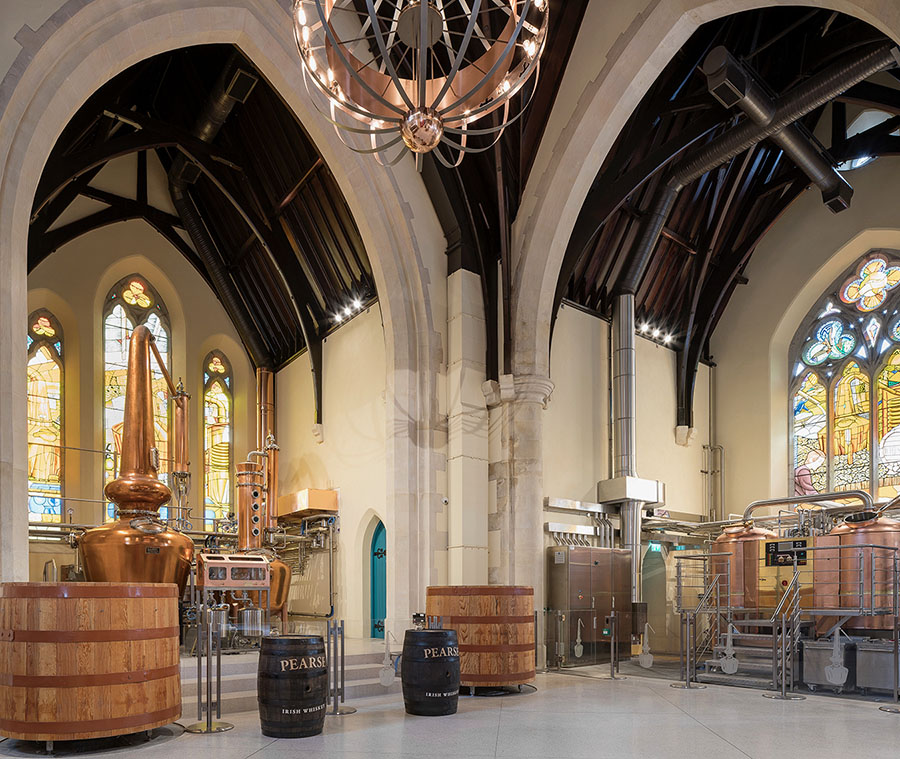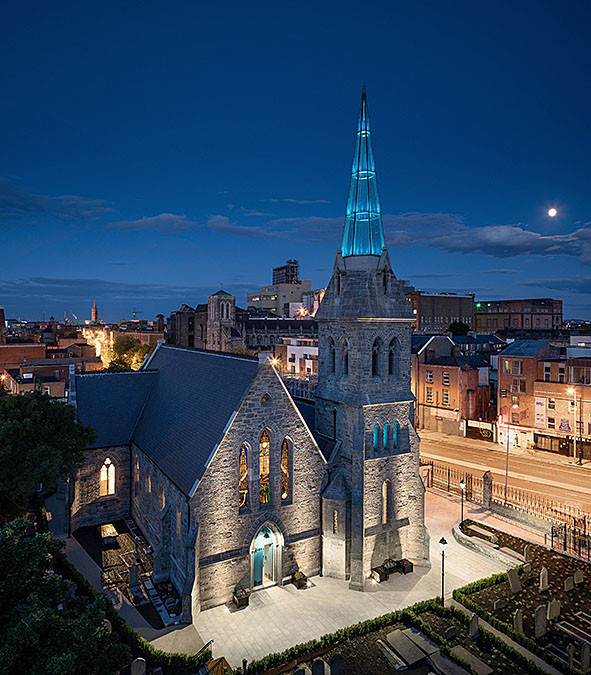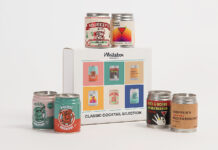
The last few decades have been kind to Irish distilling — and this most recent decade has seen a literal renaissance, with over 40 new distillery builds since the sale of Cooley Distillery to Beam in 2011. Much of this rebirth was built on the success of establishment blends like Jameson and Tullamore Dew, who still dominate sales and continue to push the category into new global markets outside its old North American and European comfort zones — which is just as well, as Irish beverage exports to the U.S. felt a collective -25% pinch this year.
By distillery head count, however, an Irish whiskey map still leaves consumers with the peculiar irony that a centuries-old spirits culture is increasingly dripping from stills as young as children. Far from feeling bashful about their lack of old pagoda roofs, young distilleries like Echlinville, Blackwater, Baoilleach, and Killowen are among the most outspoken about their place in a gastronomically shared inheritance. With no corporate histories to bank on, an element within Irish distilling’s new wave seems intent on embracing history in principle and on re-tapping the well of Ireland’s lost distilling methodologies. Peated malt, wheat, oats, peated malted oats, exotic rye- and maize-based single grain, direct-fired stills, and double distillation all played their part in Irish whiskey’s history and can be found across their casks. Some seem happy to splash about with their own experiments. Some seem deeply enamored with the vanished past. (For the record, Echlinville has a decorative pagoda.)
For youth is brash, and Irish whiskey — old as it is — in 2024 is rather young. Many of its most natively notorious makers are still largely unknown abroad. The story of brands is very different. Most new labels are sourced from Cooley or West Cork Distillers or from stray parcels of Bushmills stock or from John Teeling’s wildly successful wholesale operation, Great Northern Distillery. The latter raised sales by 22% this year to a staggering €54 million, with a massive expansion underway. But that’s changing fast.
“We are entering a new phase now,” says James Doherty, co-founder of Sliabh Liag distillery and Irish Whiskey Association chairman. “2024 will see even more new distillery releases and a greater depth and diversity of whiskey styles than has been seen in Irish whiskey since its peak over 100 years ago.”
For all the excitement about the times ahead, as in times past Irish whiskey’s fate depends upon its life abroad. In 2023, a dip in the U.S. can be partially offset by rising sales in Singapore, Nigeria, and South Korea. Protecting the category has been a core IWA concern at a time of new global appeal and a radically enlarged brand head count.
The trick will be ensuring that those safeguards are robust in their integrity and rooted in that same shared gastronomic inheritance, available to all. In 2014 the first major steps were taken with the drafting of a Geographic Indication, ratified in 2019. Virtually from the time the ink was dry, complaints arose that the file’s novel five percent cap on non-barley grains in Irish pot still whiskey bore no resemblance to the category’s history or to its lauded old bottlings, including the near entirety of expressions released before 1980. Even 1990s and 2000s bottlings of old stock don’t comply. Thankfully, with the dual submissions for a reformed file to Ireland’s Department of Agriculture by the Irish Whiskey Association and the craft-producer Irish Whiskey Guild, at least on the topic of pot still, it looks like everyone’s on the same side.

The reformed definition outlines “Irish pot still whiskey” as a heritage style composed from a minimum of 30% malted barley and 30% unmalted barley, with up to 30% traditional adjunct grains, defined as oats, wheat, and rye. It is currently waiting in the wings for a pending public consultation. “It’s been a slow burn,” notes Rademon Distillery’s David Boyd-Armstrong, chair of Spirits Ireland’s drinks council. “But I do believe things will move quickly once the public consultation happens.”
Pearse Lyons Distillery’s Conor Ryan takes a pragmatic outlook on the road ahead: “The Technical File was very much needed when it was introduced, and it served a great purpose for the time in which it was drawn up. There are some elements though, especially to do with Irish pot still whiskey mash bills, that simply must change for us to be true to our whiskey producing heritage.”
Because Irish whiskey really is very old. Like many creatures its age, it can’t always quite recall what it was doing in the 50s, let alone the 1830s, but when it does, it smiles from the eyes. “Exploring mash bills is exploring flavor,” says Conor. “We’ve put a lot of focus on our mixed mash single pot still. We now grow all our own barley, oats, wheat, and rye on our Lyons family land just to supply it.”
Most of Conor’s trials are still maturing. When they’re ready, he hopes the file will have been long since amended to reflect their Irish pot still heritage. Regardless of what they’re called, they will still be themselves — and this defiant conviction to produce them, functioning category or not, has itself been an inspiring sign of confidence from young producers. The world, after all, hasn’t really met them under any name at all.








